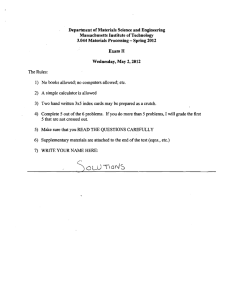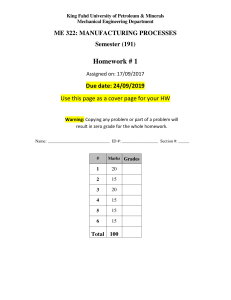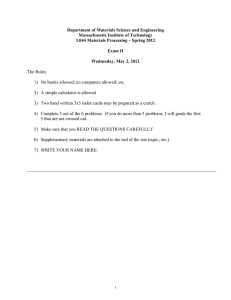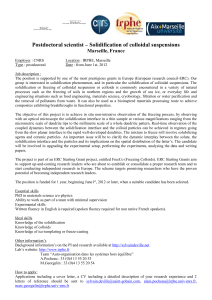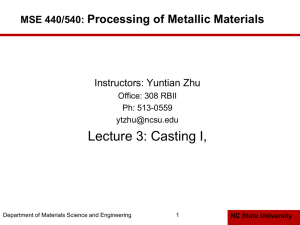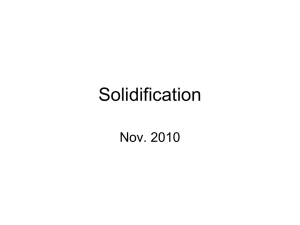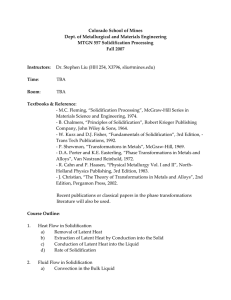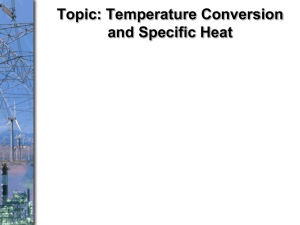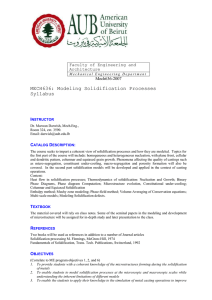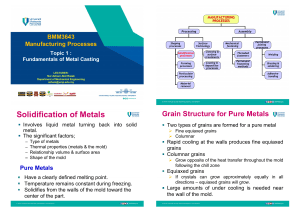Department of Materials Science and Engineering Massachusetts Institute of Technology
advertisement
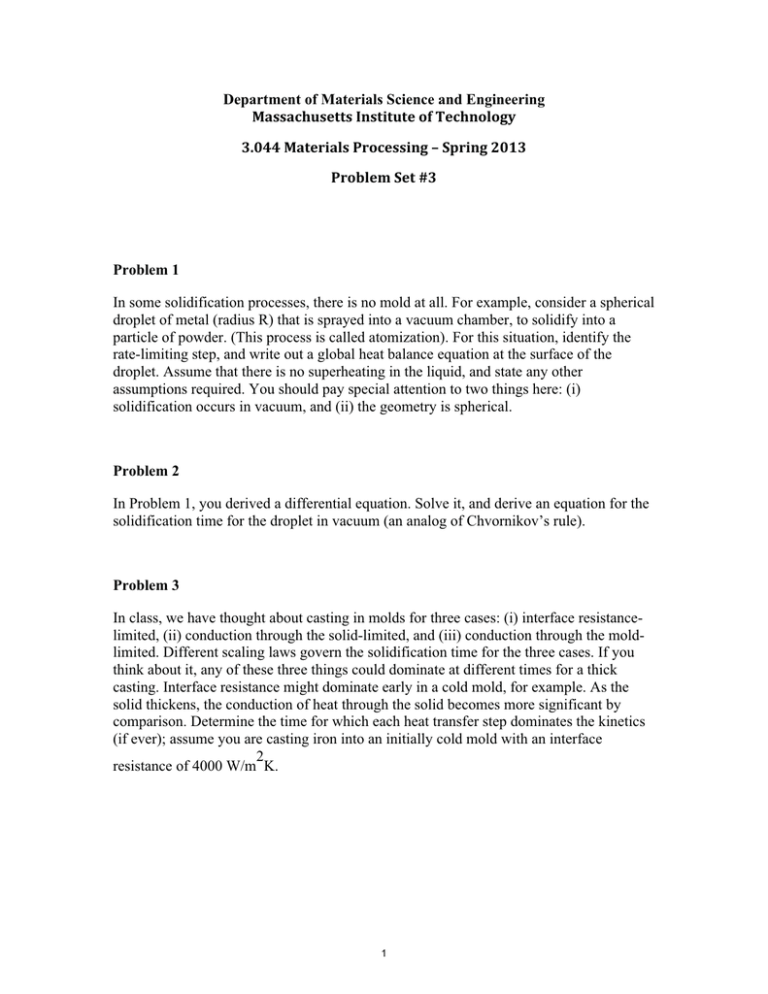
Department of Materials Science and Engineering Massachusetts Institute of Technology 3.044 Materials Processing - Spring 2013 Problem Set #3 Problem 1 In some solidification processes, there is no mold at all. For example, consider a spherical droplet of metal (radius R) that is sprayed into a vacuum chamber, to solidify into a particle of powder. (This process is called atomization). For this situation, identify the rate-limiting step, and write out a global heat balance equation at the surface of the droplet. Assume that there is no superheating in the liquid, and state any other assumptions required. You should pay special attention to two things here: (i) solidification occurs in vacuum, and (ii) the geometry is spherical. Problem 2 In Problem 1, you derived a differential equation. Solve it, and derive an equation for the solidification time for the droplet in vacuum (an analog of Chvornikov’s rule). Problem 3 In class, we have thought about casting in molds for three cases: (i) interface resistancelimited, (ii) conduction through the solid-limited, and (iii) conduction through the moldlimited. Different scaling laws govern the solidification time for the three cases. If you think about it, any of these three things could dominate at different times for a thick casting. Interface resistance might dominate early in a cold mold, for example. As the solid thickens, the conduction of heat through the solid becomes more significant by comparison. Determine the time for which each heat transfer step dominates the kinetics (if ever); assume you are casting iron into an initially cold mold with an interface 2 resistance of 4000 W/m K. 1 Problem 4 Look up the phase diagrams for the following four alloys: Mg-Al, Mg-Y, Mg-Li, Mg-Zn. For each system, calculate the partition coefficient for solidification of Mg-rich alloys. Identify the systems for which there is not a single partition coefficient, and explain why. Problem 5 For an Mg - 2 at% Al alloy with extremely rapid diffusion in the liquid phase, describe how solidification will occur, and draw some schematics that indicate the composition profile that evolves upon solidification with a plane front. Calculate the volume fraction of the solid that will solidify with a eutectic microstructure, and the fraction that will be single phase. Problem 6 In class, we discussed the process of zone refining, where a molten zone of width L is passed along the length of a rod of a material gradually, pushing dissolved impurities to the end of the rod. Diffusion is rapid in the liquid, and does not happen in the solid. Consider the solute balance in the molten zone of width L: write down a balance equation matching solute entering with that leaving. Problem 7 Identify the boundary condition that we should apply to the equation you wrote down in Problem 6 at x = 0. Solve the differential equation, which gives the solute distribution profile in the rod after a pass of zone refining. Plot the distribution. Problem 8 For the magnesium-rich alloys from Problem 4, you want to do some zone refining to remove the other elements. Based on your understanding from Problems 6 and 7, which elements will be more easily removed than the others, and why? � 2 MIT OpenCourseWare http://ocw.mit.edu 3.044 Materials Processing Spring 2013 For information about citing these materials or our Terms of Use, visit: http://ocw.mit.edu/terms.
